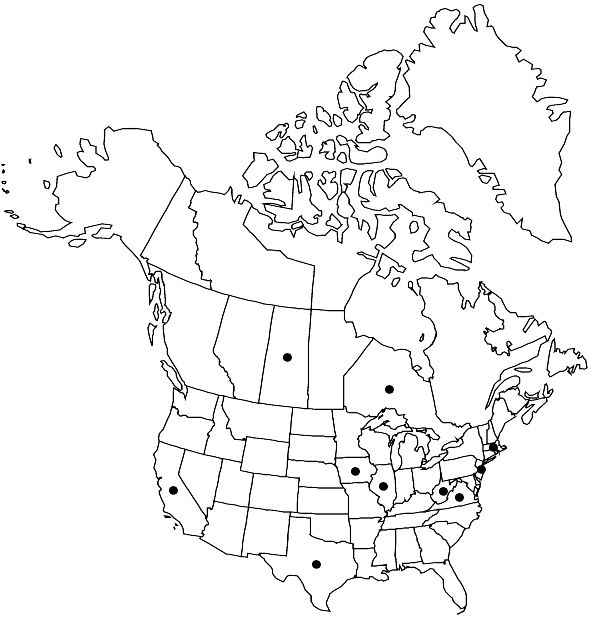Acaulon triquetrum
Bot. Zeitung (Berlin) 5: 100. 1847,.
Basionym: Phascum triquetrum Spruce London J. Bot. 4: 189. 1845
Plants three-angled, about 1 mm. Stem leaves cuspidate, keeled; laminal cells, 13–18 µm wide, 1–3:1, smooth. Seta as long as the diameter of the capsule. Spores 25–30(–40) µm, finely papillose.
Phenology: Capsules mature late autumn-spring.
Habitat: Soil, sand, clay, old fields, pastures, roadside banks, temporarily moist areas
Elevation: low to moderate elevations
Distribution
Loading map...

Ont., Sask., Calif., Ill., Iowa, Mass., N.J., Tex., Va., W.Va., Europe, Asia, n Africa, Australia.
Discussion
Acaulon muticum var. rufescens has reflexed apices while A. triquetrum does not always have these, though illustrated as such by H. A. Crum and L. E. Anderson (1981). The exsiccat C. F. Austin, Musci Appalachiani 52 has a short seta and the plant is 1.2 mm, and is placed here with A. muticum var. rufescens.
Selected References
None.
Lower Taxa
None.
... more about "Acaulon triquetrum"